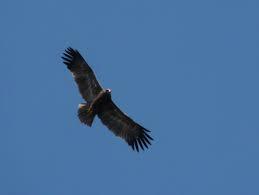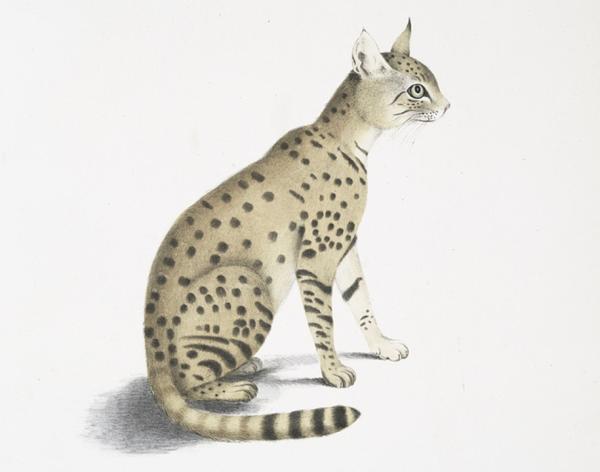
The Thar Desert, the pride of Rajasthan, is also called an ocean of sand. The Thar or Great Indian Desert has an unmatched variety of fauna; while its climatic and geographical conditions are harsh, various desert animals and plants have adapted to live in them with ease.
There are currently 11 national parks in the Thar Desert, the largest of which are the Rann of Kutch and the Nara Desert Wildlife Sanctuaries. The Rann of Kutch is the only protected area and natural habitat for the Indian Wild Ass, an endangered species of India.
Some of the native species of the Thar Desert include the desert scorpion, the red fox, the mongoose, the chinkara, the falcon, the blackbuck, the Indian Bustard and the wild cat; of course, when it comes to desert animals, the camel - the ship of the desert - cannot be far behind either. Do you want to learn more? Stay with us at AnimalWised and discover the native animals of the Thar Desert.
The Thar Desert: Home to diverse species
Located in the northwestern region of the Indian subcontinent, between Pakistan and India, the Thar desert has minimal vegetation yet it is home to more than 60 species of mammals, 350 species of birds, 35 species of reptiles, 142 fish species and hundreds of insects along with 5 amphibian species. In other words, the Thar Desert is home to many native animals. This stunning diversity includes dangerous animals, such as sand boas (Erycinae) and cobras (Elapidae).
The Thar Desert can be divided into three main geographic regions depending on their landscape: sand, plains and hills. There are also lakes and salt marshes. With less than 10 inches of rainfall in 2016, the temperature in this arid region varies from freezing cold in winter to over 100º F (38º C) in summer.
It was also home to some of the oldest civilizations in the world, such as the Indus Valley Civilisation of Harappa and Mohenjo-daro from the Bronze Age. Nowadays, the Thar Desert is the most populated desert in the world, with crop cultivation, farming, and construction on the rise. Its 11 national parks, covering 44,000 square kilometers, are the only source of protection for the native animals of the Thar Desert.
The Indian Spiny-Tailed Lizard
Also known scientifically as Saara hardwickii, this small lizard is a spiny-tailed creature found crouching in the Thar Desert. The Indian or Hardwicke's spiny-tailed lizard is listed as a vulnerable species, as it is hunted for meat and as folk medicine.
There are around 23 native species of lizards in the Thar Desert. They include geckos and monitor lizards, which are the biggest genus of lizards in the Rajasthan area.

The desert snakes of the Thar
The Thar Desert is also home to 25 native species of snakes. These include the saw-scaled viper (Echis carinatus) and the rat snakes, including the dhaman or Indian rat snake (Ptyas mucosa). Desert snakes hide easily in the sand and hunt insects and lizards.
Here you can learn more about the difference between a colubrid and a snake in our related article.

The Indian Spotted Eagle
The Indian spotted eagle (Clanga hastata) is one of the biggest flying predators and threatened species found in the Thar Desert of Rajasthan. This is also one of the major attractions of the Thar Desert national parks.
These large, majestic birds with massive wingspan feed on partridges, doves, spurfowl, and snakes. Other wild birds of prey found in the desert include the Indian vulture (Gyps indicus), the Shaheen falcon (Falco peregrinus peregrinator), and the white-eyed buzzard (Butastur teesa).

The Great Indian Bustard
The Great Indian Bustard (Ardeotis nigriceps) is among the heaviest flying birds in India. There are four bustard species in the genus, but the Great Indian Bustard is only found in the Thar Desert. The ground-dwelling Great Indian Bustard stands at 3.5 feet in height and 30 pounds in weight; it has a long neck and massive legs, and feeds on rats, ants, and insects. Sadly, it is critically endangered.
The Thar Desert is a haven for 141 species of migratory and residential birds, including the national bird of India, the peacock.

The Blackbuck
The blackbuck, scientifically known as Antilope cervicapra is found mainly in India, where it is protected by wildlife laws. It is one of the most famous antelopes native to the Thar Desert, but it is a near threatened species.
The blackbuck stands to around 2 feet (85 cm), and males have beautiful twisted, ringed horns up to 75 cm (30 in) long. Dark brown in color, blackbucks have a white circle around their eyes and black stripes on their faces. They live in herds ranging from five to fifty individuals.

The Chinkara
The Indian gazelle, also known as chinkara, is scientifically called Gazella bennettii. Over 2 feet (65 cm) tall and a weight of around 50 pounds, the chinkara has a buff-colored coat with dark stripes from the muzzle to the corner of its eye. Their horns can reach more than one feet in length.
Chinkaras can go without water for long periods of time, getting their hydration from dew and the plants they eat, as they are ruminant herbivorous animals. Chinkaras avoid areas where humans reside, so the Thar Desert is a good habitat for them.

The Asiatic Wildcat
Caracal, Asian steppe wildcat, Indian desert cat and Asiatic wildcat are all the same animal, known scientifically as Felis silvestris ornata. It inhabits scrub areas, including the Rajasthan, so it is a native animal of the Thar Desert.
The Asiatic wildcat is a small feline, weighing around 7 pounds. It is carnivorous, as it preys on rodents, rabbits and lizards. Its coat can have different colors, from red to gray, and it may have small black spots or stripes.
The Indian desert cat avoids those areas associated with human habitation. This wildcat subspecies occurs from eastern Caspian north to Kazakhstan into west India, western China and southern parts of Mongolia, which explains the different variations of its name. Here you can learn more about the types of wild cats around the world.

The White-footed Fox
The white-footed or desert fox (Vulpes vulpes pusilla) is a small subspecies of the red fox native to the Thar Desert, as it is found in the desert regions of Pakistan, Kutch in India and Baluchistan as well as southern Iran and Iraq. It resembles the Bengal fox and the fennec fox, but they are not actually related.
The white-footed fox is hunts sand grouse, partridges, and shrike. It is around 18 in (45 cm) long, with a tail that's longer than 10 in (25 cm) with a white tip. Their coat is sandy or rusty red with light gray or white patches, while most of the tail and the tips of the ears are black.

The Indian Wild Ass
The Indian or Baluchi wild ass (Equus hemionus khur) is slightly larger than the donkey, as it weighs around 650 pounds and grows to more than 6'6'' (2 m) tall. You can easily recognize the Indian wild ass because of its beautiful sandy coat, which ranges from reddish gray to pale yellow during the winter months and its dark stripe extending down its back.
This odd-toed ungulate is considered near threatened by IUCN. Here you can discover the differences between a donkey, a mule and an ass.

The Dromedary
The genus Camelus includes three different species: the Bactrian or two-humped camel (C. bactrianus), the wild Bactrian camel (C. ferus) and the dromedary (C. dromedarius), recognizable because it has only one hump.
Dromedaries are native to the Thar Desert, as they are well adapted to living in arid regions. It is about 5.9 ft (1.8 m) tall and weighs about 900 pounds. They have a single hump quite high on their backs, and they also have a long tail. Their neck is long and curved, and their mouth is quite large. The dromedaries of the Thar Desert are usually black or brown in color.
The dromedary can be found in Northwestern India, especially in the Kaziranga and National Park. Camels from the Thar are classified as endangered by the IUCN.
Here you can learn all about the differences between camels and dromedaries.

These are some of the native animals of the Thar Desert. Have you ever been there? What animals did you see? Tell us all about it in the comments section!
If you want to read similar articles to Native Animals of the Thar Desert, we recommend you visit our Facts about the animal kingdom category.